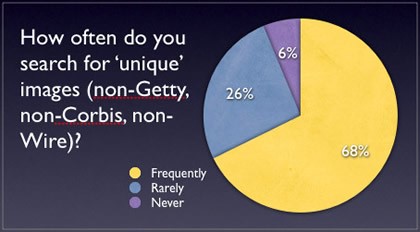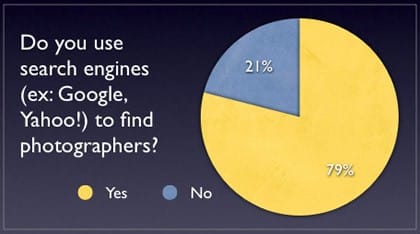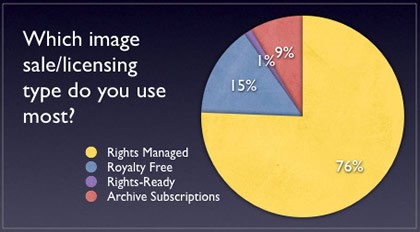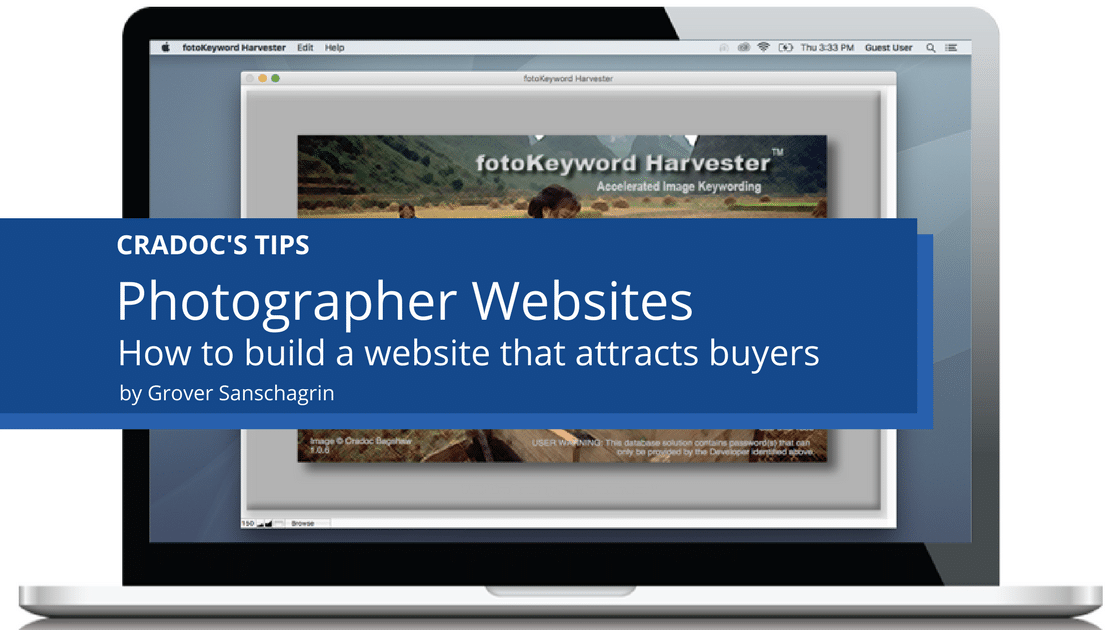by Grover Sanschagrin
Here’s my theory: Photographer websites are generally built for other photographers, and not for their true customers – photo editors and photo buyers.
I am in somewhat of a unique position. As a founder of both PhotoShelter and SportsShooter.com, I hear from photographers and photo buyers all day, every day. Both often vent their frustrations about the other, with me right in the middle.
Since the invention of the camera, photographers have been finding inspiration and ideas from the images of other photographers. As an artistic medium, this is to be expected and embraced. This is how photographers learn and grow. It’s a good thing.
So when a photographer wants their own website, they usually follow that same process. “I want a website like the one that Joe Photog has,” they’ll say. This is not a good thing.
A photographer’s website is a business tool. A successful one will be an effective and efficient self-contained marketing and image sales system. It is not meant to compete in a website beauty contest. It should be functional, and above all, serve the needs of the photographer’s real customers – the people who pay money for images.
What do photo editors and buyers like, and dislike, about photographer’s websites? Since most photographers didn’t have the answer to this very basic question, I decided to solve this mystery myself. I asked 850 of them to participate in a survey. The first 100 survey’s I received back were compiled and included in a presentation I’ve been giving called “Photographer Websites: Work Smarter, Not Harder.”
Respondents included newspaper and magazine picture editors, advertising agency and design firm photo buyers, and photo agency and wire service picture editors.
I asked a lot of questions, only a few of which are listed here.
Q: Is it worth a photographer’s time to have a website? Are you using the Internet to look for images beyond those offered in Getty, Corbis, and the Wires?
A: The answer was a big yes.
Q: How often do you search for ‘unique’ images (non-Getty, non-Corbis, non-Wire)?
A: The answers were encouraging, 68% answered frequently, and 26% said they rarely do. Only 6% said they never ventured beyond.
This means it is critical that a photographer’s website makes it easy to find and buy images. Adding a properly constructed searchable archive to your website will solve the problem of image searchability once a customer arrives, but how do they find your personal website in the first place?

Q: Do you use search engines (ex: Google, Yahoo!) to find photographers?
A: The answer was no surprise, 79% said yes, and 21% said no.
This means that those photographers interested in assignment work need to make sure that their website is constructed in a way that pleases the search engines. It should include a lot of what search engines love the most: text. That’s right, I said it – TEXT! Make captions and keywords on your images visible with the image. Use HTML instead of Flash, because HTML is text.

So what about people looking to construct a website for the main purpose of stock photography? Are search engines just as important?
Q: Do you use search engines (ex: Google, Yahoo!) to find images?
A: Once again, understandable results, as 70% said yes, and only 30% said no.
All that I’ve said about text also applies here. The more text on your website the better, because that’s what search engines were designed to work with. Flash is a major challenge for search engines, and although websites built entirely in Flash look pretty, they’re almost always constructed in a way that is not functional from a search engine point of view.
I wanted to know what photo buyers thought of Flash-based websites. Several photographers have made the assumption that Flash websites are just the thing to make picture editors want to work with them, and even command a higher rate. Is this true?
Q: True or False: Will a uniquely designed photographer website (one that looks and operates differently from any other photographer website) make you more likely to assign work to, or license images from, the photographer?
A: Interestingly enough, a large majority of photo buyers responded that Flash-based websites did NOT influence them in this way, as 73% of them answered false, and only 27% answered true.
Obviously, you’re not getting extra style points from many of your customers just for using Flash. Since search engines don’t like Flash, why lock yourself up into a Flash-only world?
There are some exceptions, because some companies, like liveBooks, produce Flash-based websites for photographers that have solved the search engine-indexing problem. Their system includes a text-only version of the site that the search engines can index. You can get the design benefits of Flash, and the index ability of text.
Moving forward, to a point where a photo buyer, with credit card in hand, has successfully found your site, and searched through your e-commerce enabled archive to find that perfect image, now what? Does all this talk of ‘microstock’ have you nervous?
Q: Which image sale/licensing type do you use most?
A: You can breathe a little easier because 76% said that Rights-Managed licensing is what they use most, and only 15% claimed that Royalty Free was their most common method. 9% answered subscriptions and only 1% said they use Getty’s still somewhat new “Rights-Ready” the most.

To sum up the results of my survey:
1) Photo editors and buyers are always in a rush, and are short of time – so your website needs to be simple, easy to understand, and fast-loading.
2) They are using search engines, and are looking for unique images, so your website needs to play well with Google and Yahoo!
3) Once they find your site, they want to be able to find an image and pay you for it quickly and easily. Powerful search and e-commerce tools should be there when they need it.
4) Rights-Managed image licenses are still the norm. Thankfully, fotoQuote can be integrated into any website through its partnership with PhotoShelter. This makes the process of licensing Rights-Managed images directly from your own website instantaneous and easy.
Remember: Functionality first! The next time you want advice about a photo website, ask a person who pays money for images!
Grover Sanschagrin is Vice President of Marketing for PhotoShelter, and Executive Producer for SportsShooter.com. His experience with online productions also include major roles with ChicagoTribune.com, the Quokka Sports Network (which included NBCOlympics.com and FinalFour.net), Altpick.com, and web hosting company S2F Online. Sanschagrin studied photography and photojournalism at the Rochester Institute of Technology and Ohio University.
Try fotoQuote Pro 7
fotoQuote® Pro 7 is the industry standard photography pricing guide for freelance photographers, helping you determine and negotiate a fair price for your photography. Pricing for over 360 categories of stock photos and over 70 assignment types giving you over 10,000 pricing options. It is the only pricing guide available in iOS!
fotoQuote® Pro 7 is also a powerful quoting and licensing tool providing you with all that you need to bid, quote, price and protect your images. Want to invoice too? fotoBiz X is the tool you need. Try the FREE demos to see why we’re the best in class!
No monthly fees, No annual fees.
Have you tried the FREE Demos of our programs?


